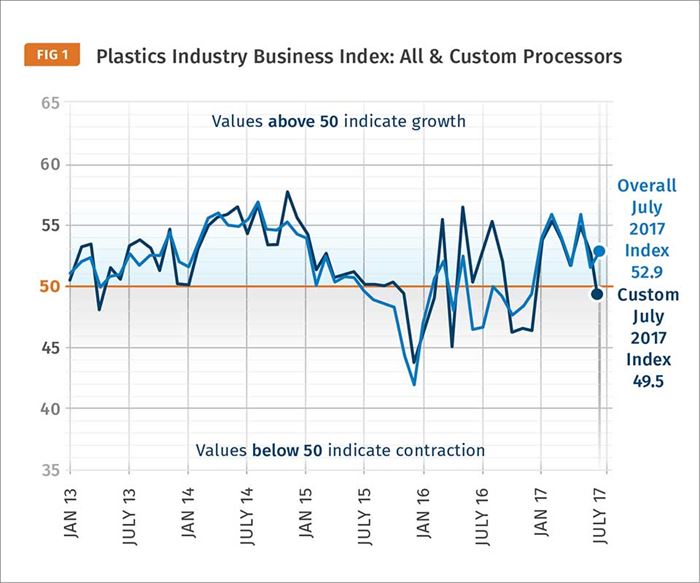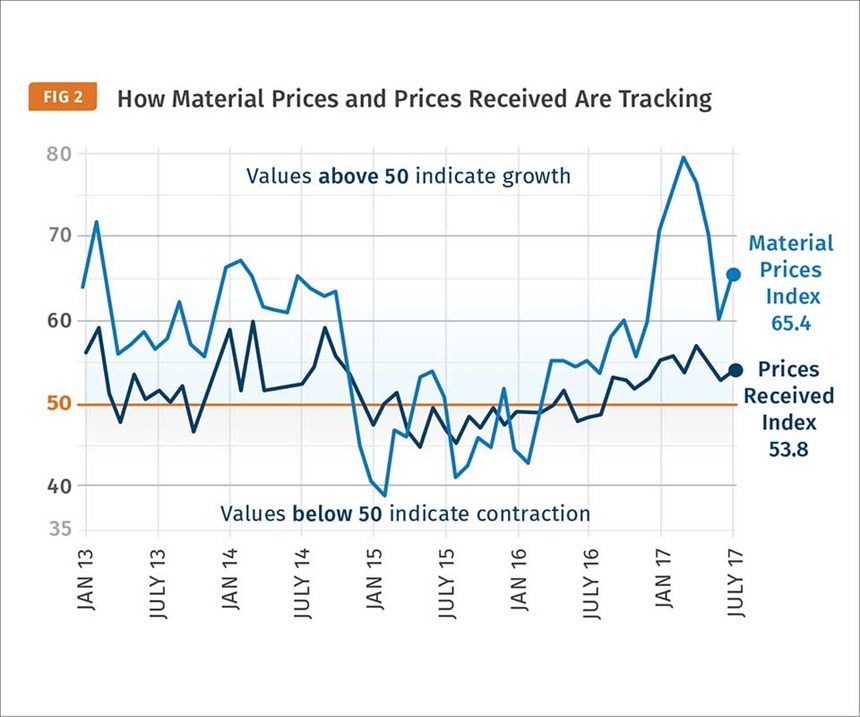July’s Index: 52.9
Overall industry index is up 12% from last July, though processor numbers dip.
Registering at 52.9, the Gardner Business Intelligence “Plastics Industry Business Index” moved up a tick in July, falling just short of its year-to-date average of 53.7 (see Fig. 1). Compared with July 2016, the index for the overall industry is up 6.2 points.
Among custom processors, the index registered 49.5 in July, falling into contrac- tion territory as declines were recorded in backlog, production, and new orders. For processors, the average production reading at 59.5 over the first six months of 2017 was better than the first six-months of any of the last five years. This made the July 2017 production reading of 45.2—a 15-point drop since May—an unpleasant surprise.
Although new orders and production data from custom processors has been more volatile over the last two years, both metrics have moved closely together, with one result being that backlogs during 2017 have averaged a reading of 49.7, suggesting that backlog conditions have not changed significantly despite volatility elsewhere.
In Fig. 2, the gap in the index values for material prices and prices received, a trend first witnessed among custom processors in late 2016, continued through the first-half of 2017. The divergence in these indexes reached its apogee this past March, before being cut substantially as material prices have tracked lower since April.
By comparison, the index for prices received has been stable, with an average reading of 54.9 in the year to date, indi- cating consistent but mild growth in pricing power among custom processors.
Related Content
-
Krones Acquires Netstal
Krones adds PET preform injection molding to its bottle blowing and filling capabilities, as well as cap molding and expansion into medical, food and other markets.
-
DuPont Buys Medical Product Manufacturer Spectrum Plastics
Purchase price of $1.75 billion for leading supplier of extruded, molded, and 3D printed medical components.
-
Medical Tubing: Use Simulation to Troubleshoot, Optimize Processing & Dies
Extrusion simulations can be useful in anticipating issues and running “what-if” scenarios to size extruders and design dies for extrusion projects. It should be used at early stages of any project to avoid trial and error and remaking tooling.

.jpg;width=70;height=70;mode=crop)





